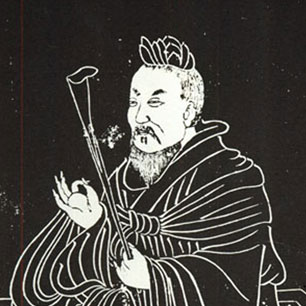
1. Portraits of Confucius teaching disciples in Quzhou Confucius Temple
Right in front after entering the Shengji Hall of Qufu Confucius Temple is a stone carving with inscriptions meaning "teacher for all ages" in the handwriting of Emperor Kangxi of the Qing dynasty (1636-1912). Below it, there is a painting of Confucius as minister of criminal justice in his home state of Lu by Wu Daozi, a master painter of the Tang dynasty (618-907), and a painting of Confucius on the left by Gu Kaizhi, a famous painter of the Jin dynasty (266-420). The portraits are quite lifelike, and Kong Duanyou, the 48th-generation descendant of Confucius, craved them on stones during the Song dynasty (960-1279).
In 1684, Emperor Kangxi of the Qing dynasty toured Mount Tai and then went to Qufu in Shandong province. According to Kong Shangren, who accompanied the emperor during the trip, Kangxi walked out of the Dacheng Hall to the Shengji Hall after paying tribute to Confucius, and went through all the stone carvings with Confucius portraits there. He then asked which portrait was the most lifelike, and Kong Yuqi, the 67th-generation descendant of Confucius, answered with certainty that it was the one that shows Confucius teaching disciples and one of his disciples Yan Hui following him. The figurehad been brought to Quzhou and craved on a stone tablet by Kong Duanyou.
2. Portraits of Confucius teaching disciples in Qufu Confucius Temple
Portrait of Confucius Teaching Disciples by Wu Daozi, a master painter of the Tang dynasty (618-907), is the most widely known portrait of Confucius. The various styles shown in portraits of Confucius teaching disciples by Wu Daozi and those related to Wu's paintings as well as the different styles demonstrated in Wu's portraits of Confucius on other topics have affected people's perceptions for Wu and his paintings, and the perceptions in turn have affected people's understanding for his paintings in other documents.
3. Transformed portraits of Confucius
Some portraits of Confucius have been transformed under the influence of Buddhist and Taoist statues during their development. A typical example is one depicting Confucius by a tea table created during the reign of Emperor Gaozong of the Song dynasty (960-1279) and collected in Hangzhou Confucius Temple. These portraits show aesthetics of society at that time.